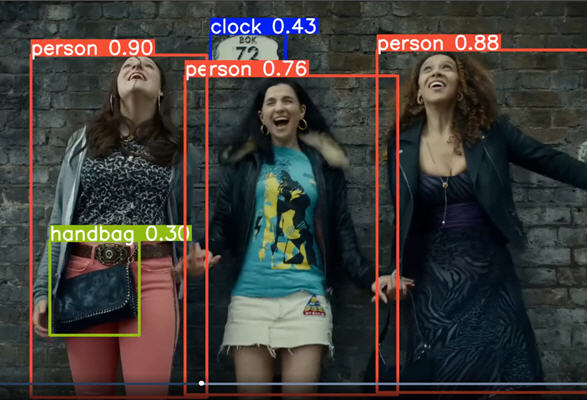Useful Applications
Among the truly beneficial AI applications in the video domain, audio transcription stands out. It serves as the foundation for numerous other analytical features, such as generating and translating subtitles, drafting summaries, identifying keywords, and creating relevant Q&A based on video content. These tools are particularly valuable in educational videos, conferences, or any content rich in structured spoken audio. However, it’s important to note that this condition is only met by a fraction of produced videos, limiting the scope of this utility.
Example 1: Q&A Generation
For instance, on the webTV of the Caisses d’Allocations Familiales, there’s a video titled “Moving: The Great Family Adventure.” This is a 22-minute program where the audio can easily be transcribed. If you input the transcription into an AI and ask, “What questions does this text answer, and what are the summarized responses?” here are the identified questions (the summarized answers are not provided here):
- How to prepare your household for a new life in a new home?
- How to reassure children?
- What assistance is available to help with a smooth move?
- Why can moving be disruptive for children?
- How to help children adjust to their new home?
- What is the best time to move with children?
- What administrative steps are necessary when moving?
- How can a struggling family move smoothly?
- How to receive the moving allowance?
Example 2: Video Quality Enhancement
Another smart application of AI is the improvement of resolution or frame rate, particularly in the restoration of old films. These technologies breathe new life into cinematic works by enhancing visual and sound quality, which is undeniably beneficial for preserving cultural heritage. Similarly, improving audio by reducing background noise and increasing clarity is a valuable application in this domain.
Here is an illustration:.
Applications to Use with Caution
On the other hand, some uses of AI, while technically impressive, have limited practical value. For example, object or facial recognition has few practical applications outside of video surveillance. Similarly, chapter detection can only be effective if the video is already perfectly structured, which is rarely the case in the production of diverse content. These uses require complex, energy-intensive processing, and the results often need human oversight and correction.
Questionable Applications
There are also many questionable AI applications, such as the automatic generation of videos from simple prompts. While innovative, this technique often produces artificial content made up of stock images that offer no new information. Instead of enriching the audiovisual landscape, it contributes to the proliferation of superficial and redundant content.
Here’s an example of a video generated by the Fliki application from a prompt. This is not to disparage the tool but to demonstrate that the added value of such content is very limited. The number of automatic video generation tools is constantly expanding.
Key Takeaways
In this context, it is imperative to exercise discernment in the use of AI. The excitement surrounding these technologies should not make us forget the principles of digital sobriety and the need to ensure the reliability of results. Every AI application must be carefully evaluated to ensure it truly adds value, rather than merely exploiting technological potential without considering the final usefulness.
While AI offers fascinating prospects for the video sector, it’s essential to distinguish between relevant uses and those driven by trends. By prioritizing applications that genuinely enhance the quality and accessibility of content, while rigorously controlling the results, we can harness the full potential of this promising technology and avoid the pitfalls of unchecked and superficial innovation.
